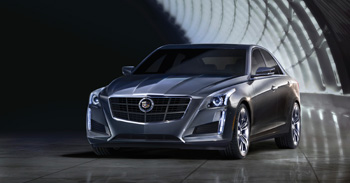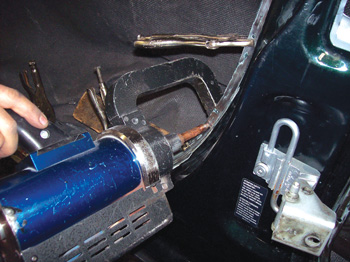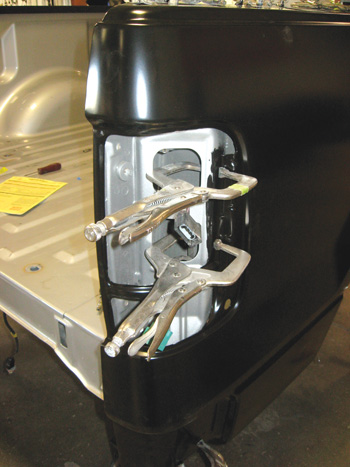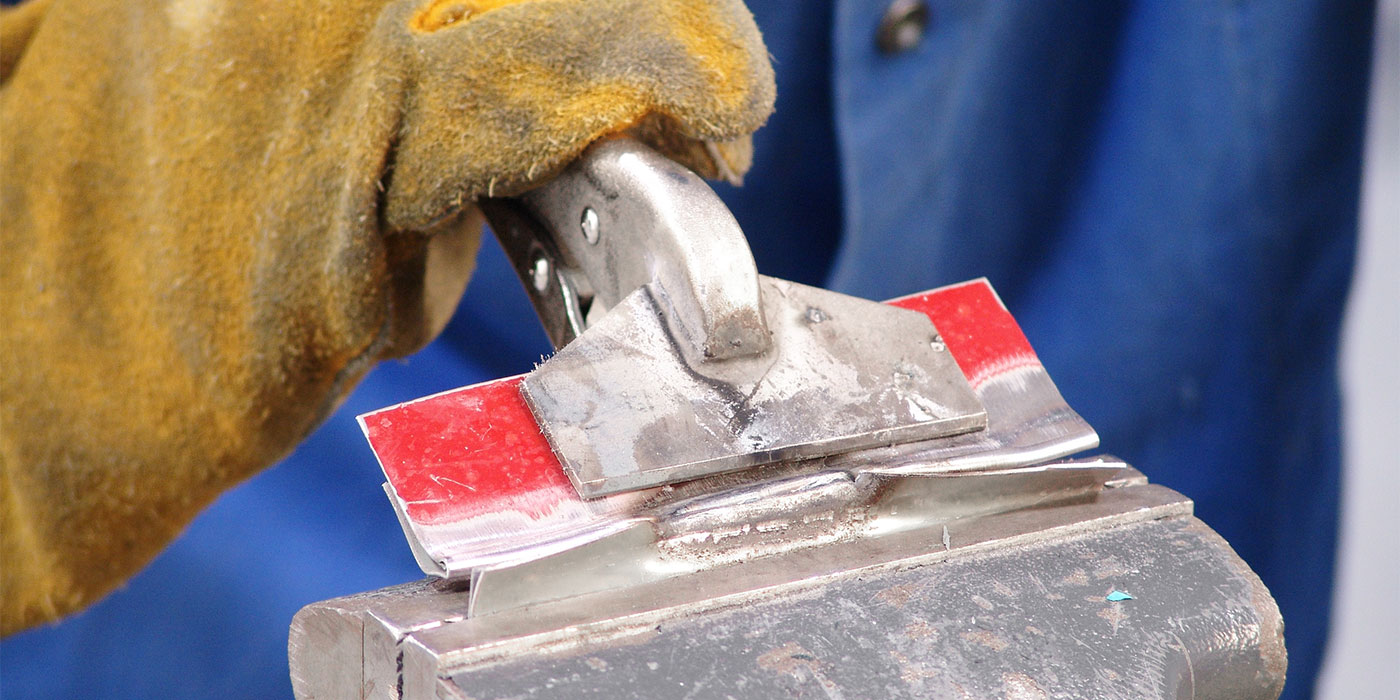 A shop has decisions to make every day. One of those decisions is when and where to follow manufacturer guidelines on a damaged vehicle while determining a repair plan.
A shop has decisions to make every day. One of those decisions is when and where to follow manufacturer guidelines on a damaged vehicle while determining a repair plan.
Following all the manufacturer guidelines on that vehicle seems simple enough – just duplicate what the factory did during assembly, right? But it’s not as simple as one would hope. To know when to duplicate and when not to becomes an issue of knowing what is needed. Not all repair procedures duplicate the factory build process.
Adding to the problem is that some shops choose not to follow vehicle manufacturer guidelines. In some cases, shops can’t due to equipment and/or training issues.
A Question and Answer
When a vehicle comes into a shop and is presented to the technician for the structural and/or body repair, a question normally forms in his mind: How am I going to do this? That question may have many different answers. The variables sometimes seem limitless. The answers will vary with the way the estimate is written, the training and ability of the technician, and the capabilities and resources of the shop. The final result must be a vehicle correctly repaired to meet all structural and safety requirements that were designed into the vehicle. And it has to look perfect.
Everyone can say “just duplicate what the factory did during assembly.” But the problem may be that the build process at the factory may not be the correct repair procedure. Looking up recommended repair procedures becomes more important with the change in designs.
 Look It Up
Look It Up
Look into the decision on the estimate. First, all the damage needs to be addressed. The industry mentality has changed in the last few years to where shops now realize that addressing hidden damage as soon as possible is important. We as an industry have seen the value in doing the disassembly first to see all the damage, and this has improved cycle time dramatically. What happens next is critical to the proper repair of the vehicle.
To write an accurate estimate, the proper repair procedure must be looked up. In the repair industry, we have so many rules and guidelines we expect estimators to follow. These guidelines involve how we write and download information for the insurance companies.
It doesn’t help that many insurance company guidelines are different in how parts are looked up, used and entered. These duties are time consuming for the estimator. The practice of writing the estimate and letting the technician look up the procedures can allow for the cost of repairs not matching the estimate. I know time is something we all never seem to have enough of, especially for estimators. The truth is, this process could be costing money to a shop and posing a liability.
Granted, some repairs, like replacing a bumper cover, are straightforward, and many estimators have experience in knowing what is the right procedure. But what about replacing a B-pillar reinforcement? Is that so straightforward? We need to realize that automakers are changing the designs faster than in the past. A procedure from one year may not apply to the following year’s model.
This is evident when you attend training classes and see that the amounts of HSS and UHSS are increased every year. The body format may be the same, but the structure is changing. A damaged 2007 vehicle and the same 2008 vehicle with similar damage may have different sectioning procedures due to increased structural enhancements. Without looking up procedures, how does an accurate estimate get written? The hidden cost of not looking up the procedures during estimating is that now a technician will have to look them up. When a technician has to look up procedures, he’s not working on vehicles. That alone costs a shop money. As a whole, a technician and a shop are producing revenue when the technician has his or her hands on the vehicle being repaired.
Factory vs. Shop
Most estimating systems are pretty good at putting all the pricing and labor into the repairs for estimate accuracy. In some cases, the repair procedure does not duplicate what the factory used during assembly. Hopefully, these procedures are passed on to the technician to follow and correctly repair the damage according to manufacturer specs.
For aluminum intensive vehicles, we’ve seen rivet bonding being used in place of welding as a repair. On the new Cadillac STS, we’ve seen that the roof needs to be adhesively bonded instead of MIG brazed. These are changes in recommended repair procedures as the factory can do some procedures that the body shop can’t.
Other procedures can be duplicated in the shops, but it takes training, equipment and dedication – which may include considerable expenses. Welding would be a first consideration.
Spot Welding
Does the shop have the ability to duplicate factory welds? Investing in a squeeze type resistance spot welder (STRSW) is a big decision. Shops that have pulled the trigger and made that leap have found that it’s a worthwhile venture. Compared to MIG welding, the time and labor saved makes a considerable difference. In many shops, the difference in production can be measured immediately. Some welders claim to be factory welders or manufacturer-recommended, besides being able to duplicate the strength and look of the weld and the ease of operation. Spot welders also reduce the Heat Affect Zone (HAZ) that may damage steels or create corrosion hot spots.
Another feature of STRSW machines is the ability to duplicate corrosion protection. The use of weld bonding by many manufacturers gives increased vehicle rigidity and corrosion protection along with welds, which reduces many of the creaks, pops and groans of vehicles while driving. To not duplicate this procedure can increase the possibility of a warranty issue on corrosion (costing the shop money) or an unhappy customer due to increased noise while driving (costing the shop its reputation).
It’s surprising how many shops don’t duplicate this process. It takes training and some time, but the quality of the repair outweighs everything else. Once a technician gets proficient at weld bonding, the time is negligible.
Some things are difficult at best to duplicate. Rock chip coatings on some vehicles continue to be a challenge. Supply companies are striving to find better ideas.
One innovation that has recently come out is a file belt sander that allows even the strongest steel spot welds to be removed quickly, easily and cost effectively. The days of buying large quantities of expensive drill bits may be coming to an end. With this tool, you can grind the welds from the backside of a salvage panel and weld bond the panel much faster and easier than before. This allows a shop to duplicate a procedure even with salvage parts. These types of innovations every day improve a shop’s ability to duplicate a vehicle manufacturer’s build process. But we have a long way to go.
 Get on the Same Page
Get on the Same Page
To duplicate or follow the procedures from the vehicle manufacturer is what we do to give the customer a safe and quality repair. Knowing if we should not duplicate and use a different procedure recommended by vehicle manufacturers is also what we as professionals need to know for the same result.
Whether you use vehicle manufacturer websites or repair information companies to look up the procedures, make sure estimators and technicians are on the same page. Follow through with technicians to make sure they understand why. Training as to why a procedure should be used is readily available through I-CAR and vendors. This saves time and money for all but also keeps a shop’s reputation of the highest standard.
To not follow procedures or to not duplicate when is possible is a business decision that could cost a technician and shop. In a dream world, we could do it all. In our world, we must make decisions. Follow procedures and duplicate where it’s possible. To make a decision not to do so because we don’t think it’s necessary shortchanges our customers.
Mitch Becker is a technical instructor for ABRA Auto Body & Glass. Contact him at (763) 585-6411 or [email protected].













